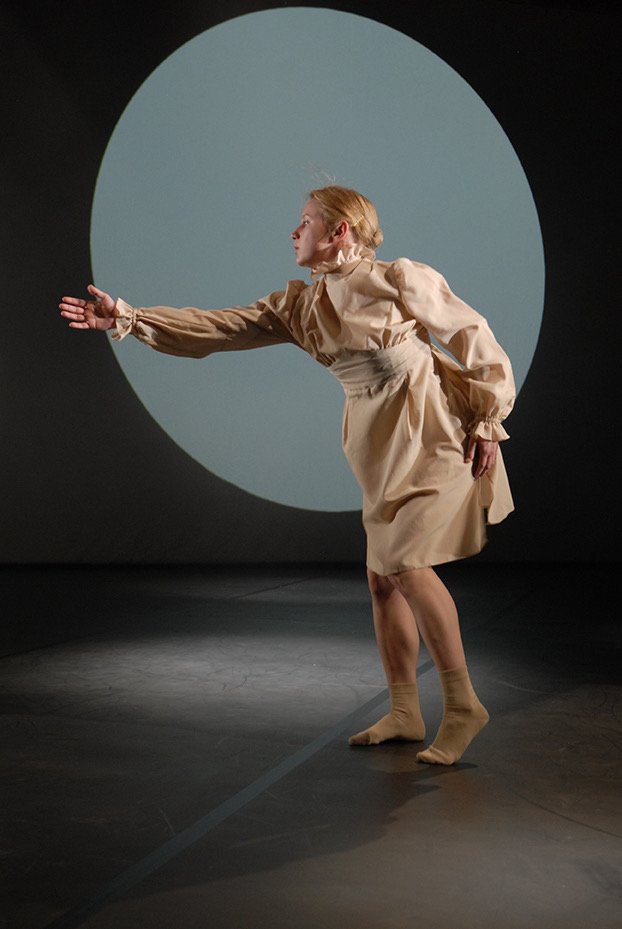We are a collective brought together by one choreographer, one theater producer, and two composers with the purpose of launching ideas into productions.
since 2019
GOD AND THE DEVIL
April 2 & 4, 2025
HALL
Ballet in two acts based on Mare Kandre's novel "God and the Devil"
Once lived two little boys, Devil and God: Devil dark, thin, hairy, and kind; God red-haired, ill-tempered, and spoiled chubby. What became of them as history unfolded? An allegorical story with a powerful dramatic arc about the parallel paths of good and evil begins with the childhood of Devil and God. God's teasing and rumors about Devil lead to revenge, disappointment in humanity, and the creation of Hell. However, the anger subsides, and as Heaven and Earth have collapsed in the meantime, Hell becomes overcrowded. They must seek a New World. And so they go. Devil with his wife at the forefront, humanity in a massive line behind, and God trailing last.
Composers Timo Steiner and Sander Mölder
Director Teet Kask
Producer Tiiu Tamm
Animator Juho Lähdesmäki
Lighting Artist Margus Vaigur
On stage are Cätlin Mägi's bagpipe ensemble, Laura Põldvere, and dancers Kyoshiro Oshima, Aneta Varts, Jevgeni Grib (Vanemuine).
THE FATE OF HUMANITY
We sadly see that humanity is capable of ruining everything it gets its hands on. In this story, as both Earth, Heaven, and finally Hell fall, a new place for living and settling is found, another chance is given, but let's be honest, not for long... Humans remain humans.
DANCE
Themes of Heaven, Hell, and world creation have been explored in ballet for centuries. We can envision the graceful lines of classical ballet portraying hovering angels and the quick, contorted movements of infernal beings... But how does one move in a new World that God allows in their final hope?
MUSIC
Mare Kandre's story is rich in stimulating contrasts. There are intriguing characters and their unexpected developments, several musical and auditory hints: like an ominous silence in Heaven or the lone sound of a child's voice from the devastated land. The main musical challenge, however, isn't in Heaven, Earth, or Hell – we can more or less imagine their sounds. But how does that new world they are seeking sound? The musical soundscape is based on the tones of a bagpipe from folklore in many lands and the human voice.
VISUALS
The visual language of the performance is created with the help of AI by Finnish animator and director Juho Lähdesmäki.
Golden Temple
Our sharp minds are primarily focused on the collaborative forms of music and dance, particularly ballet.
Why a ballet? A destructive idea starts to move somewhere in the undefined dark depth of a human being. Before we know the meaning, something stirs and dances inside us. An idea becomes an act through the chain of movements. A lot of these movements are meetings with people. A relationship between two persons is described by their distance and changes in it better than by words.
March 11, 2025
Estonia Concert hall
Ballet “GOLDEN TEMPLE”
Inspired by a novel of Yukio Mishima “The Temple of the Golden Pavilion”
The creative union, *birdname, has been invited to represent Estonia and Europe at the 2023 Asia-Europe Cultural Festival with the ballet Golden Temple on the 22nd of October. The Asia-Europe Cultural Festival is organized by the Asia-Europe Meeting (ASEM) subsidiary, Asia-Europe Foundation (ASEF), since 2018 to celebrate the artistic diversity of Asia and Europe and to promote dialogue and cultural exchange between artists from both regions.
The most-well known novel by Mishima Yukio (1925-1970) based on the incident of burning down the Kinkaku-ji Tempel in Kyoto follows the bizarre relationship between a young monk and the Golden Temple which starts to unfold already in the main character’s childhood when he hears stories from his father about the most beautiful thing in the world.
The temple with all its beauty conquers the young boy’s mind, changes it, manipulates with it by manifesting itself to the boy at the most inappropriate moment and then again, keeping all its beauty to itself. In the state of confusion, the young monk is left with no choice but to destroy the source of this beauty in order to be set free.
But first and foremost, BEAUTY.
“Each individual part contained a reference to the beauty of the next individual part. The beauty of each detail was filled with its anxiety. Beauty dreamt of perfection yet had no idea of finalization, and so it was lured on to the next unknown beauty.” (Mishima)





